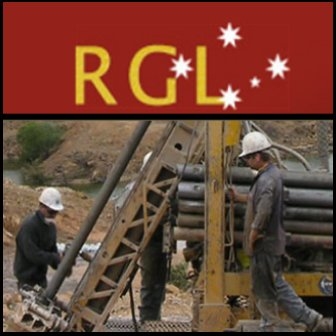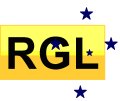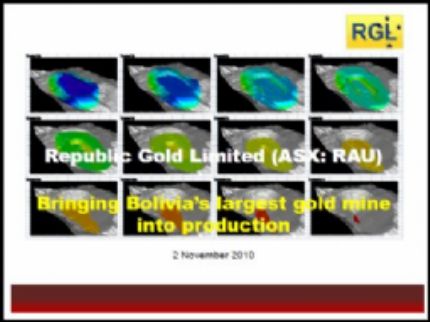
Republic Gold Limited (ASX:RAU) Amayapampa Technical Update Reveals Outstanding Grades As Feasibility Study Progresses
Brisbane, Sep 18, 2009 AEST (ABN Newswire) - Republic Gold Limited (ASX:RAU) today announce that the Company has made advances with technical feasibility study work on the Amayapampa Project ("Project") aimed at completion of the Bankable Feasibility Study, with the near-completion of the surface sampling programme that has been ongoing since the start of the year and resurveying of the topography. The conclusion of both will allow the resource upgrade to be completed. Metallurgical testwork is well advanced and the Company's consulting Structural Geologist, Dr Steve King, is visiting the Project.
Republic's Managing Director; John Kelly, said:
"Outstanding grades continue to be revealed on the surface at Amayapampa, with some of these in surface colluvial material. The northernmost of these trenches indicate the potential to extend the current pit by over 100 metres to the north. Knowing that these grades exist makes the current metallurgical testwork programme very important so that these high grades are not wasted when production commences. The promised resource estimate upgrade is running behind schedule, but with the continued receipt of high grade trench samples, this sampling programme needs to be completed first. The resource upgrade just can't be completed until the surface topography is correct."
Surface Sampling Programme
The extensive surface sampling programme done at the Project is drawing to a very successful conclusion. In total, approximately 4,800 metres of trenches and 480 5-metre deep shafts will be completed when the programme finishes later this month. Initially, the programme was only to entail 1,135 metres of trenching and 115 shafts. Extensions to almost every trench have been necessary due to a greater width of the mineralisation at surface than was expected.
A number of very high grade results were encountered in colluvial, or surficial clay, material. It is expected that the hard rock source of the gold for these high results would be very close to the colluvial material.
Trench Nos 28, 29, 30 and 31 provide excellent support for the few drillholes that lie north of the proposed conceptual open pit. The northernmost of these trenches is 180 metres north of the current conceptual open pit that has been calculated at a gold price of US$825 per ounce. In an announcement to the market on 2 June 2009, the Company discussed a number of drillholes marginally north of the pit boundary. This announcement said:
"The drill section that is 25-50 metres north of the proposed pit contain intercepts 3.79 metres @ 5.22 g/t Au only 30 metres below surface, with potentially the same structure being encountered 40 metres further down with 2 metres @ 14.54 g/t Au and a further 50 metres deeper with 2 metres @ 9.10 g/t Au. The northern-most drilling intercept, some 100 metres north of the proposed pit, of 22 metres @ 0.76 g/t Au (including several intervals of greater than 2 g/t Au) demonstrates that the system continues to be strong to the north and occurring from only 4 metres below surface this potentially is economic at the current gold price of US$950/ounce."
Trench Nos 28 and 29 provide support for two drillholes in the vicinity of these trenches; RC95AP22 and RC97A225, drilled early on in the life of the Project. These drillholes provided intersections of 52 metres at 0.62 g/t Au and 52 metres at 0.41 g/t Au respectively. With the combination of the surface trench results, these drillholes show that there is good potential to extend the mineralisation to over 100 metres to the north.
The extensive area of dump material partially sampled by Trench Nos 33 and 34 produced very encouraging grades. As this material would not have been carted too far from its source, this opens up the south-east corner of the proposed pit as a target zone, where previous drilling was not very encouraging.
Surface Topography
Aerial photography work has been completed by the Bolivian Military National Institute of Aerophotogrametry covering the Company's concessions at Amayapampa. Detailed fieldwork will be undertaken shortly to survey all the recent drillholes, trenches and shafts, in addition to as many historic drillhole collars as can be found. The underground workings will be tied into this surface surveying by having the first few hundred metres of the principal adit surveyed.
The topography work is expected to be completed in October, at which point the mineral resource update can be commenced.
Metallurgical Testwork
The first stage of the metallurgical testwork programme being performed at the Gekko Systems Ballarat laboratory has been successfully completed. A range of oxide and fresh ore samples from Amayapampa are being tested to assess their amenability to Gekko's Gravity Flotation Intensive Leach ("GFIL") process. The testwork program is designed to not only assess the suitability of the Amayapampa ore to this process but, because of the range of ore samples selected will also evaluate any variability in metallurgical performance within the orebody. A GFIL design plant has the potential to reduce both capital and operating costs through its simplicity and the ability to be modularised, requiring less infrastructure and engineering on site.
Recovering at a coarser particle size will also result in lower power requirements and hence, plant operating costs. Success with this testwork could see an improved metallurgical recovery for the Project. Currently the recovery is modelled at 83.8%. The process design flowsheet will probably reincorporate a flotation circuit which was removed from the design in earlier feasibility studies. The reintroduction of a flotation circuit is expected to increase recoveries by up to 4%. Added with the potential for the Gekko processes to improve recovery in their own right, a project metallurgical recovery of +90% is realistic, a figure that would be expected from this style of mineralisation.
The process is relatively simple and uses Gekko's patented InLine Pressure Jig ("IPJ"), InLine Leach Reactor ("ILR") and the Gekko Resin-Column for gold recovery. Gravity and flotation are the primary recovery devices followed by intensive cyanide leaching of the concentrates. The process recovers gold at a far coarser size range than conventional systems through a combination of continuous comminution using a Vertical Shaft Impactor crusher ("VSI"), gravity recovery and flotation. The VSI has the ability to break gangue, leaving the mineral particles intact and radically reduces the over-breaking of minerals that causes sliming and hence gold loss, such that the minerals will be easily recovered by both gravity and flotation. VSI crushing improves the efficiency of gold recovery by gravity techniques.
To date, all the VSI tests have been completed with an average expected recirculating load of 308% in the crushing circuit to produce material at P100 = 600um. All the samples tested resulted in a recirculating load less than 500%, which means they were all amenable to VSI processing. Gravity recovery tests have now commenced.
The Company had previously tested one sample from Amayapampa with Gekko Systems. This test proved inconclusive due to the low grade of the sample. The current samples were chosen with great care and have head grades that reflect the grades found in the mineralisation.
Consulting Structural Geologist's Visit
The Company has utilised the consulting structural geological services of Dr Steve King a number of times at both the Far North Queensland and Burraga Projects. Dr King is spending approximately two weeks at Amayapampa from 8th September.
Dr King will assist the Company by tying in the structural geology with the surface geochemistry. Dr King's primary goal is to provide evidence for and optimise particular aspects of the final feasibility resource estimate. Particularly, he will look for evidence of a plunge relationship of the mineralisation that our local geologists have observed. This will be crucial in providing information for the updated resource modelling exercise. This work will also lead into providing targets for further exploration at depth, along strike and regionally. Dr King will compile a local structural geology map, as well as a regional structural geology map to assist with the understanding of the local geology with the country/continental geology (e.g. the metalliferous belt from Amayapampa to the north and into Peru).
For the complete Republic Gold ASX Announcement, please click the link below:
http://www.abnnewswire.net/media/en/docs/61456-ASX-RAU-324234.pdf
Contact
John Kelly
Managing Director
Republic Gold Limited
Mob: +61-418-577-759
| ||
|





